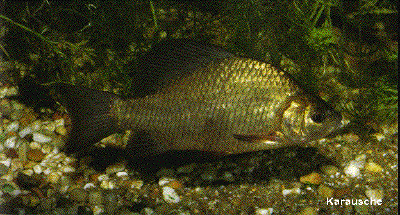
| An Introduction To Ponds: |
| All of today's various goldfish species can be traced back to the Crucian Carp, actually just about any of the species, when left alone by man, will revert back to this carp within a few generations. The earliest recorded natural mutation of the Cruccian Carp can be found all the way back to around 1000 A.D. in China. This first mutation was red in color and so astounded the Chinese, that they began the practice of controlled breeding to keep this red strain and also to develop new mutations. |  |